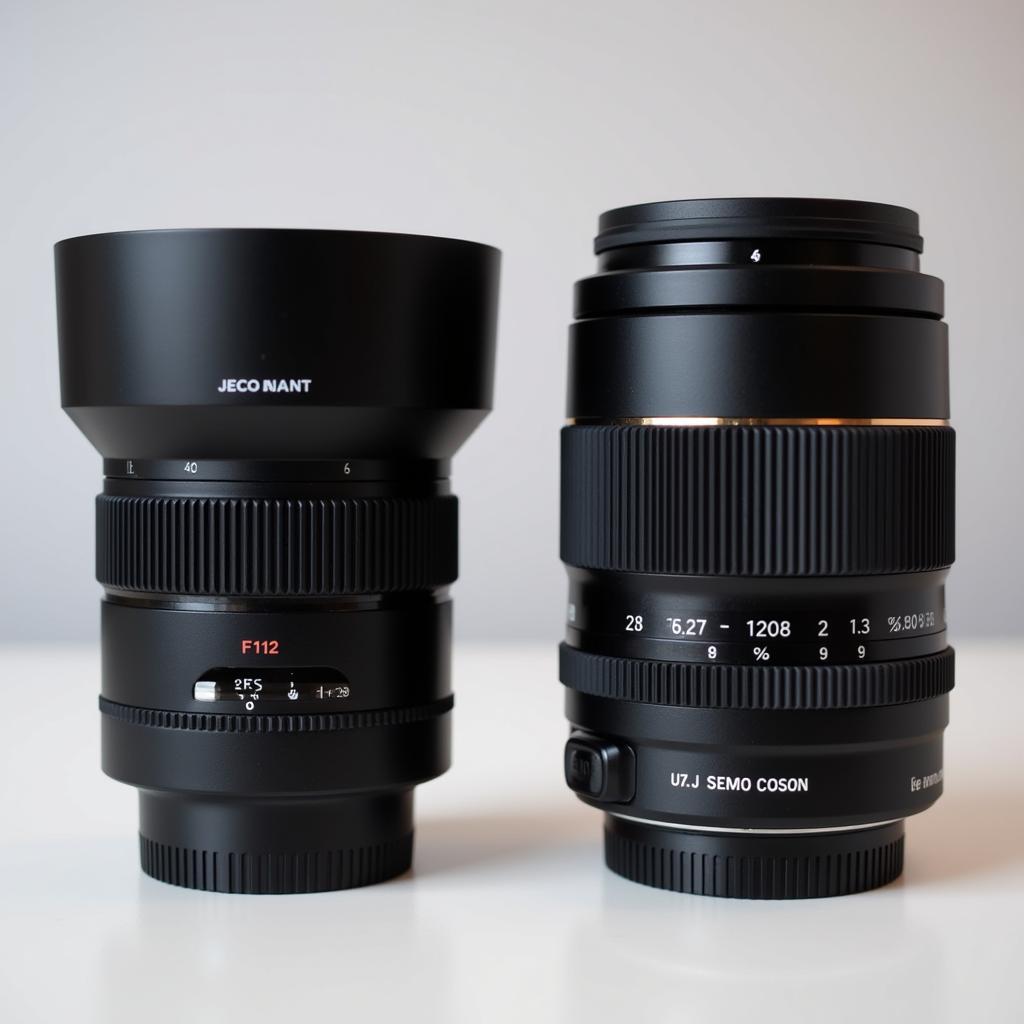F1.2 vs F1.4: Understanding the Differences and Making the Right Choice
November 10, 2024Aperture is a crucial element in photography, controlling the amount of light that reaches the camera sensor. F1.2 and f1.4 are two popular wide apertures, often chosen for their ability to create a shallow depth of field and perform well in low-light conditions. But what exactly separates these two seemingly similar f-stops, and which one is right for you? This article delves into the nuances of F1.2 Vs F1.4, exploring their advantages, disadvantages, and ideal use cases.
Decoding the Aperture Numbers: F1.2 and F1.4
Understanding the numbers themselves is the first step. The f-number represents the ratio of the lens’s focal length to the diameter of the aperture. A smaller f-number indicates a wider aperture, allowing more light to enter. Therefore, f1.2 is wider than f1.4. This seemingly small difference has significant implications for both image quality and practical use.
Light Gathering Capabilities: The Advantage of F1.2
The wider aperture of f1.2 allows it to gather significantly more light than f1.4. This translates to better performance in low-light situations, enabling faster shutter speeds and lower ISO settings, reducing noise and preserving image detail. For photographers shooting in dimly lit environments, such as concert halls or indoors, the extra light-gathering capability of f1.2 can be a game-changer.
Depth of Field: A Subtle but Significant Difference
Both f1.2 and f1.4 produce a shallow depth of field, that dreamy, blurred background effect that isolates your subject. However, f1.2 takes this a step further, creating an even shallower depth of field. This can be incredibly useful for portrait photography, allowing you to draw attention to the subject and create a more artistic look. However, it also requires precise focusing, as even slight errors can result in parts of the subject being out of focus.
Size, Weight, and Cost: The Trade-offs
F1.2 lenses are typically larger, heavier, and significantly more expensive than their f1.4 counterparts. This is due to the complex engineering required to produce such wide apertures. The added bulk can make them less practical for everyday use or travel photography.
 F1.2 vs F1.4 Lens Size Comparison
F1.2 vs F1.4 Lens Size Comparison
Choosing the Right Aperture: F1.2 or F1.4?
The decision between f1.2 and f1.4 ultimately depends on your specific needs and priorities. If you frequently shoot in low light or require the shallowest possible depth of field, and budget isn’t a major concern, then f1.2 might be the ideal choice. However, if you prioritize portability and affordability, f1.4 offers an excellent balance of performance and practicality.
“Choosing the right aperture is like choosing the right tool for the job,” says renowned photographer, Amelia Stone. “F1.2 is a specialized tool for demanding situations, while f1.4 is a versatile workhorse.”
Practical Applications: When to Use Each Aperture
F1.2 excels in low-light portraiture, astrophotography, and situations where isolating the subject is paramount. F1.4 is a more versatile option, suitable for a wider range of genres, including portraits, street photography, and even some landscape photography.
 F1.4 Portrait Photography
F1.4 Portrait Photography
Conclusion: Finding the Perfect Balance
The choice between f1.2 vs f1.4 involves weighing the benefits of increased light gathering and shallower depth of field against the trade-offs of size, weight, and cost. Understanding these differences empowers you to make an informed decision and choose the aperture that best suits your photographic style and needs.
FAQ
- Is f1.2 significantly better than f1.4? While f1.2 offers advantages in low light and depth of field, f1.4 is often a more practical choice.
- Are all f1.2 lenses the same? No, lens quality and performance can vary significantly between manufacturers and models.
- What other factors affect depth of field? Focal length and distance to the subject also play a significant role.
- Are f1.2 lenses good for video? Yes, they excel in low-light video and allow for cinematic shallow depth of field.
- Are f1.4 lenses good for beginners? Absolutely, they are versatile and offer excellent image quality.
- Can I use filters on f1.2 lenses? Yes, but ensure compatibility with the large front element.
- What are some popular f1.2 lenses? Examples include the Canon RF 50mm f/1.2L USM and the Nikon NIKKOR Z 58mm f/0.95 S Noct.
For further support, please contact us at Phone Number: 0915117113, Email: [email protected] or visit us at: Tổ 3 Kp Bình An, Phú Thương, Việt Nam, Bình Phước 830000, Việt Nam. We have a 24/7 customer service team.